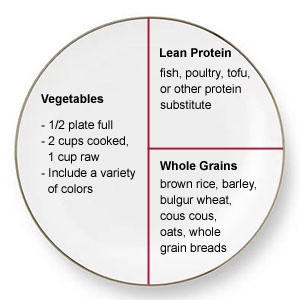This week we’re examining why wheat is the most dangerous food, and focusing on its role in causing autoimmune diseases. In Tuesday’s post, we talked about how wheat induces a leaky gut; today, we’ll look at how wheat generates auto-antibodies that attack self tissue.
Known Wheat-Derived Auto-Antibodies
In the book we talk about the role of gluten in creating auto-antibodies that attack tissue transglutaminase (tTg), a human enzyme that is abundant in the thyroid and gut. This leads to Hashimoto’s thyroiditis and celiac disease.
However, wheat can generate auto-antibodies to other human molecules besides tTg. These include:
- Collagens I, III, V, and VI. tTG catalyzes the cross linking of gliadin peptides with interstitial collagen types I, III, and VI, leading to formation of antibodies against collagen. Celiac disease patients have been found to have circulating auto-antibodies to collagens I, III, V, and VI. [1]
- Synapsin I. Synapsins are a family of proteins regulating neurotransmitter release at synapses. By forming antibodies against wheat gliadin in animals, and then immunoprecipitating human proteins with these antibodies, investigators found that antibodies to wheat gliadin bind strongly to synapsin I. Anti-wheat antibodies from celiac disease patients bind to human synapsin I. [2]
Other known targets of wheat-generated auto-antibodies include gangliosides, actin, calreticulin and desmin. [3,4]
More Wheat-Derived Auto-Antibodies Still to be Found
Scientists may have only begun to identify the human proteins that wheat can generate antibodies against.
For instance, auto-antibodies taken from the blood of celiac disease patients bind to an unidentified 55 kiloDalton protein expressed on the nuclear membrane of intestinal cells, endothelial cells and fibroblasts. [5] That nuclear protein remains unidentified today.
Effects of Wheat-Derived Auto-Antibodies
These various wheat-derived auto-antibodies can trigger attacks against a wide range of tissues. Blood vessels are a frequent target. In our book we note that heart transplants are generally precipitated by wheat-derived autoimmune attacks on the heart. [6]
Nerves are another. Wheat-derived antibodies against neuronal tissue, probably targeting synapsin, can produce “neurologic complications such as neuropathy, ataxia, seizures, and neurobehavioral changes.” [2]
Neurologic deficits, including axonal neuropathy and cerebellar ataxia, are among the most common extraintestinal symptoms associated with celiac disease. In addition, elevated levels of anti-gliadin Ab have been associated with idiopathic neuropathy and ataxia, even in the apparent absence of the characteristic mucosal pathology. [2]
I’ve bolded that last part because it shows that you can have neurological damage from wheat even if your intestine is doing fine.
Neuronal synapsin has been reported to be reduced in bipolar disorder and schizophrenia. [7] Both diseases have been tied to wheat consumption. It’s possible that wheat-derived autoimmune attacks on synapsin may be a causal factor in both diseases.
The ability of wheat to induce peculiar autoimmune reactions is perhaps best illustrated in schizophrenia. Schizophrenics frequently have antibodies to wheat, but not the ones that occur in celiac disease:
In contrast to celiac disease patients, an association between the anti-gliadin immune response and anti-TG2 antibody or HLA-DQ2 and -DQ8 markers was not found in individuals with schizophrenia. In addition, the majority of individuals with schizophrenia and anti-gliadin antibody did not exhibit antibody reactivity to deamidated gliadin peptides. Further characterization of the antibody specificity revealed preferential reactivity towards different gluten proteins in the schizophrenia and celiac disease groups. These findings indicate that the anti-gliadin immune response in schizophrenia has a different antigenic specificity from that in celiac disease and is independent of the action of transglutaminase enzyme and HLA-DQ2/DQ8. [8]
There are multiple mechanisms by which wheat consumption contributes to schizophrenia and other mental illnesses – we mentioned opioid peptides last week – and elimination of wheat should be a first step in treating schizophrenia, bipolar disorder, and other mental illnesses.
Conclusion
Wheat is a toxic food which can trigger auto-antibodies against a variety of tissues, precipitating a diverse array of autoimmune conditions. Many of these autoimmune conditions have not yet been characterized.
Other grains and legumes can induce autoimmune damage in similar fashion. In a comment today, John Wilson noted that he had recurring mouth sores until he gave up peanuts, which cured the problem. Peanuts are a legume and, much like wheat, contain a variety of immunogenic toxins.
If you have an odd, unexplained medical condition, try Step Two of our book – removing toxic foods from the diet. Removing immunogenic toxins will cure many pathologies, and make it easier to diagnose whatever is left over.
Related Posts
Other posts in this series:
- Wheat Is A Cause of Many Diseases, I: Leaky Gut Oct 26, 2010.
- Why Wheat Is A Concealed Cause of Many Diseases, III: Adjuvant Activity Nov 01, 2010.
References
[1] Dieterich W et al. Cross linking to tissue transglutaminase and collagen favours gliadin toxicity in coeliac disease. Gut. 2006 Apr;55(4):478-84. http://pmid.us/16188922.
[2] Alaedini A et al. Immune cross-reactivity in celiac disease: anti-gliadin antibodies bind to neuronal synapsin I. J Immunol. 2007 May 15;178(10):6590-5. http://pmid.us/17475890.
[3] Alaedini A, Green PH. Autoantibodies in celiac disease. Autoimmunity. 2008 Feb;41(1):19-26. http://pmid.us/18176861.
[4] Shaoul R, Lerner A. Associated autoantibodies in celiac disease. Autoimmun Rev. 2007 Sep;6(8):559-65. http://pmid.us/17854749.
[5] Natter S et al. IgA cross-reactivity between a nuclear autoantigen and wheat proteins suggests molecular mimicry as a possible pathomechanism in celiac disease. Eur J Immunol. 2001 Mar;31(3):918-28. http://pmid.us/11241297.
[6] Sategna-Guidetti C et al. Binding by serum IgA antibodies from patients with coeliac disease to monkey heart tissue. Scand J Gastroenterol. 2004 Jun;39(6):540-3. http://pmid.us/15223677.
[7] Vawter MP et al. Reduction of synapsin in the hippocampus of patients with bipolar disorder and schizophrenia. Mol Psychiatry. 2002;7(6):571-8. http://pmid.us/12140780.
[8] Samaroo D et al. Novel immune response to gluten in individuals with schizophrenia. Schizophr Res. 2010 May;118(1-3):248-55. http://pmid.us/19748229.













Recent Comments